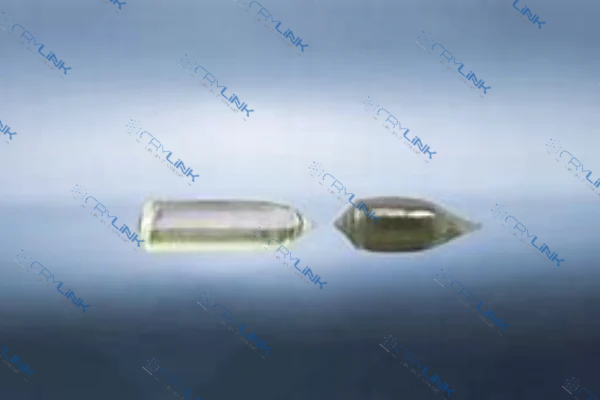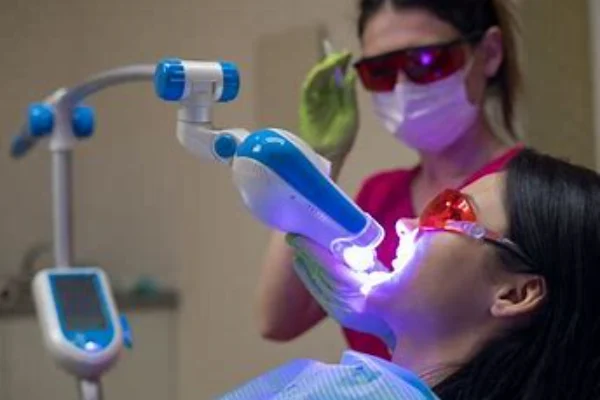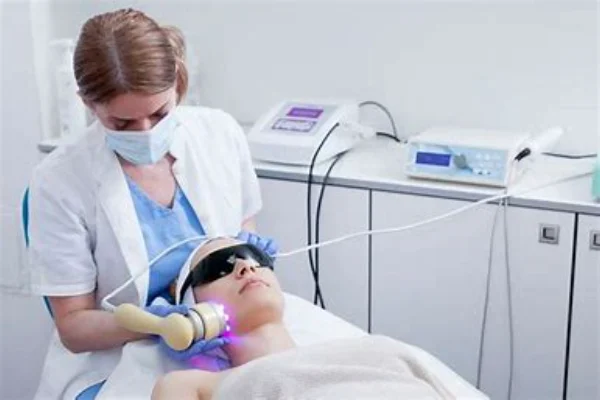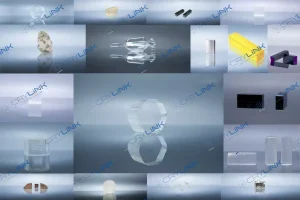Introduction to Tm:YAP Lasers
Tm:YAP lasers, or Thulium-doped Yttrium Aluminum Garnet lasers, represent a significant breakthrough in the realm of medical lasers. Emitting light at around the 2-micrometer wavelength, these lasers offer unparalleled accuracy and efficiency in tissue ablation and other surgical applications.

Understanding Tissue Ablation
Tissue ablation has become an increasingly integral part of modern medicine. While the term might sound daunting, it is fundamentally a procedure that involves the selective destruction of specific tissues, usually for therapeutic purposes. Historically, surgical instruments and other more invasive methods were used for such procedures. However, the advent of medical lasers has revolutionized the field of tissue ablation, providing several advantages.
The principle behind laser tissue ablation lies in the interaction between light energy and biological tissues. Every tissue in the human body has a unique composition, making it respond differently to various wavelengths of light. When a specific wavelength of a laser is directed towards a targeted tissue, the energy from the laser gets absorbed by the tissue, leading to its heating and eventual vaporization or destruction. What makes lasers particularly advantageous is their precision. This means that while the targeted tissue is being destroyed, the surrounding healthy tissues remain largely unaffected, minimizing potential side effects or complications.
For instance, consider a tumor nestled between vital organs. Using traditional surgical methods, removing the tumor could risk damaging these organs. But with lasers, the tumor can be targeted with exceptional precision, sparing the nearby critical structures.
Another benefit of laser ablation is the range of control it offers to medical professionals. By adjusting the intensity, pulse duration, and wavelength, doctors can achieve the desired depth and degree of tissue destruction, making it versatile for a wide array of medical conditions. Whether it’s eliminating a superficial skin lesion or targeting deeper pathological tissues, lasers offer a tailored approach.
Furthermore, the effectiveness of the laser doesn’t solely depend on its properties but also on the properties of the targeted tissue. Some tissues are more pigmented, some have higher water content, and others may have unique chromophores. These variances play a role in how the tissue absorbs the laser light. Consequently, choosing the right laser wavelength for a particular procedure is crucial. For instance, a laser that works effectively for vascular lesions might not be suitable for treating bone or cartilage.
In essence, tissue ablation through lasers is a testament to how cutting-edge technology can transform medical treatments, making them more precise, efficient, and safer for patients. The marriage of laser physics with medical science ensures that as we advance, treatments will become even more refined, reducing invasiveness and increasing the chances of successful outcomes.

Tm:YAP Lasers for Tissue Ablation: A Medical Perspective
Lasers, particularly Tm:YAP lasers, have revolutionized the field of medicine. Thulium-doped Yttrium Aluminum Garnet lasers, known as Tm:YAP, offer a unique range of advantages that make them particularly beneficial for various medical procedures.
One of the primary strengths of Tm:YAP lasers is their high absorption rate in water. This property allows these lasers to cause rapid heating when applied, leading directly to effective tissue vaporization. The nature of the laser ensures that it acts swiftly and accurately. When we talk about surgical procedures, especially ones that require tissue removal or reshaping, the efficiency with which the laser works can drastically reduce the time a procedure takes.
Depth control is another remarkable feature of Tm:YAP lasers. Medical procedures often require a fine balance between removing problematic tissue and preserving healthy structures beneath. These lasers provide controlled penetration depth, which is essential for avoiding unintentional damage to underlying structures. This accuracy ensures minimal post-operative complications and ensures the desired therapeutic effect is achieved without inadvertently harming the patient.

Moreover, the precision of Tm:YAP lasers ensures reduced collateral damage. In surgical scenarios, surrounding tissues, especially vital ones, can be accidentally affected. The meticulous nature of these lasers assures that the surrounding tissues remain untouched, leading to fewer complications and faster healing.
An often-overlooked advantage, but equally important, is the laser’s ability to promote coagulation, leading to efficient hemostasis. During surgeries, especially ones involving tissue removal or reshaping, there’s always a risk of excessive bleeding. The coagulation properties of these lasers reduce this risk, making surgeries safer and post-operative recovery smoother.
When we compare Tm:YAP lasers with other prevalent medical lasers such as CO2 and Nd:YAG, the former’s versatility becomes evident. Suitable for a diverse array of procedures, from dermatology to urology, Tm:YAP lasers are adaptable. Their efficacy, particularly in tissue ablation and cutting, often surpasses other lasers. Additionally, there’s a reduced risk of thermal injury with Tm:YAP lasers, making them safer for both the patient and the medical professional.
One of the significant advancements that Tm:YAP lasers have brought into the medical world is their role in minimally invasive surgeries. Their precision means that surgeons can make smaller incisions. This translates to quicker recovery times for the patient, less post-operative pain, and reduced scarring and aesthetic concerns. The emotional and psychological benefits for patients, knowing they’ll have minimal scarring, can’t be underestimated.
In the world of ophthalmology, accuracy isn’t just beneficial—it’s paramount. Eyes are intricate and delicate organs, and surgeries on them require extreme precision. Tm:YAP lasers are becoming the preferred choice for procedures such as glaucoma treatment, lens fragmentation in cataract surgeries, and various retinal therapies.
Similarly, in urology, Tm:YAP lasers have showcased their worth. Their precise nature makes them ideal for treating conditions like an enlarged prostate, fragmenting kidney stones, and ablating tumors in the bladder. These treatments, which could be quite invasive and painful in the past, are now more bearable and efficient.
Dermatology, a field that often deals with visible and surface-level conditions, has also greatly benefited from the precision of Tm:YAP lasers. From treating vascular lesions and removing benign skin tumors to scar revision and skin resurfacing, these lasers offer effective solutions with minimal invasiveness.
Lastly, safety remains paramount in any medical procedure. Proper training for medical professionals using Tm:YAP lasers is crucial. It’s also essential to ensure that both the practitioner and the patient wear adequate eye protection to prevent potential retinal damage. Regular calibration and maintenance of the laser equipment are vital to ensure its efficacy and safety.
In conclusion, Tm:YAP lasers, with their myriad advantages, have cemented their place in modern medicine. As we continue to explore their potential, they promise to make medical procedures more efficient, safer, and less invasive. Their role in improving patient outcomes, reducing recovery times, and ensuring patient safety makes them indispensable in today’s medical landscape.

Future of Tm:YAP Lasers in Medicine
The future of Tm:YAP lasers in the realm of medicine shines brightly, offering a glimpse into a world where surgeries are more precise, efficient, and minimally invasive. As the technological world evolves, so does the sphere of medical lasers, especially the Thulium-doped Yttrium Aluminum Garnet lasers.
Neurosurgery and spinal procedures, traditionally considered high-risk due to the delicate nature of the nervous system, stand to benefit immensely from the advent of Tm:YAP lasers. The precision that these lasers promise can make complex procedures, such as tumor excision from the brain or spinal cord, considerably safer. Imagine a world where intricate surgeries on the brain or spinal cord can be done with minimal collateral damage, ensuring that only the problematic tissue is targeted, leaving the surrounding vital neural structures untouched. This not only would improve surgical outcomes but could also drastically reduce post-operative complications, enhancing patient recovery.
Another promising avenue is the development of portable Tm:YAP laser devices. Such advancements could revolutionize field surgeries, especially in remote or challenging environments where setting up a full-fledged operating room is not feasible. Portable devices can be particularly beneficial during times of crises, like natural disasters or in war zones. Medical professionals could provide immediate care, reducing the time between injury and treatment, which often determines the difference between life and death.
Perhaps one of the most intriguing prospects is the integration of Tm:YAP lasers with robotic surgical systems. Robotic surgery, already known for its precision and reduced invasiveness, could be further enhanced by coupling it with the capabilities of Tm:YAP lasers. Robots, guided by skilled surgeons but devoid of human tremors, combined with the accuracy of these lasers, might make surgeries exceedingly precise. Such an amalgamation can offer unparalleled accuracy, reducing human error, and ensuring even more predictable surgical outcomes.
In sum, the horizon for Tm:YAP lasers in medicine is expansive and full of potential. As research deepens and technology advances, it’s clear that these lasers will play an increasingly pivotal role, setting new benchmarks in surgical excellence and patient care. The forthcoming medical landscape, bolstered by the capabilities of these lasers, is undoubtedly one of hope, precision, and enhanced therapeutic outcomes.

Conclusion
Tm:YAP lasers have solidified their place in the medical world due to their unmatched precision and versatility. As technology advances, their applications will expand, reinforcing their indispensable role in modern medicine.
FAQs
- How does the Tm:YAP laser differ from traditional surgical tools?
- Unlike traditional tools, Tm:YAP lasers provide a level of precision that reduces collateral damage and promotes faster healing.
- Are Tm:YAP laser treatments painful?
- Most patients report minimal discomfort. Anesthetics are often used to enhance patient comfort during procedures.
- What is the recovery time post a Tm:YAP laser surgery?
- Recovery times vary based on the procedure but are generally shorter compared to traditional surgeries due to minimal invasiveness.
- Can Tm:YAP lasers be used in conjunction with other medical lasers?
- Yes, Tm:YAP lasers can be combined with other lasers for enhanced results, depending on the medical requirement.
- Are there any risks associated with Tm:YAP laser surgeries?
- As with any medical procedure, there are risks. However, when performed by trained professionals with proper safety measures, the risks are minimal.







